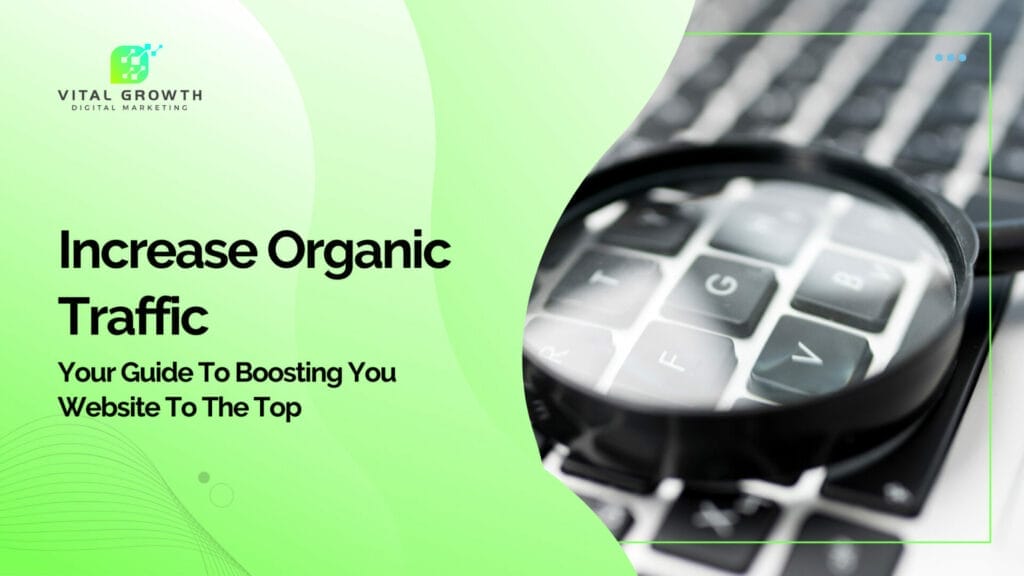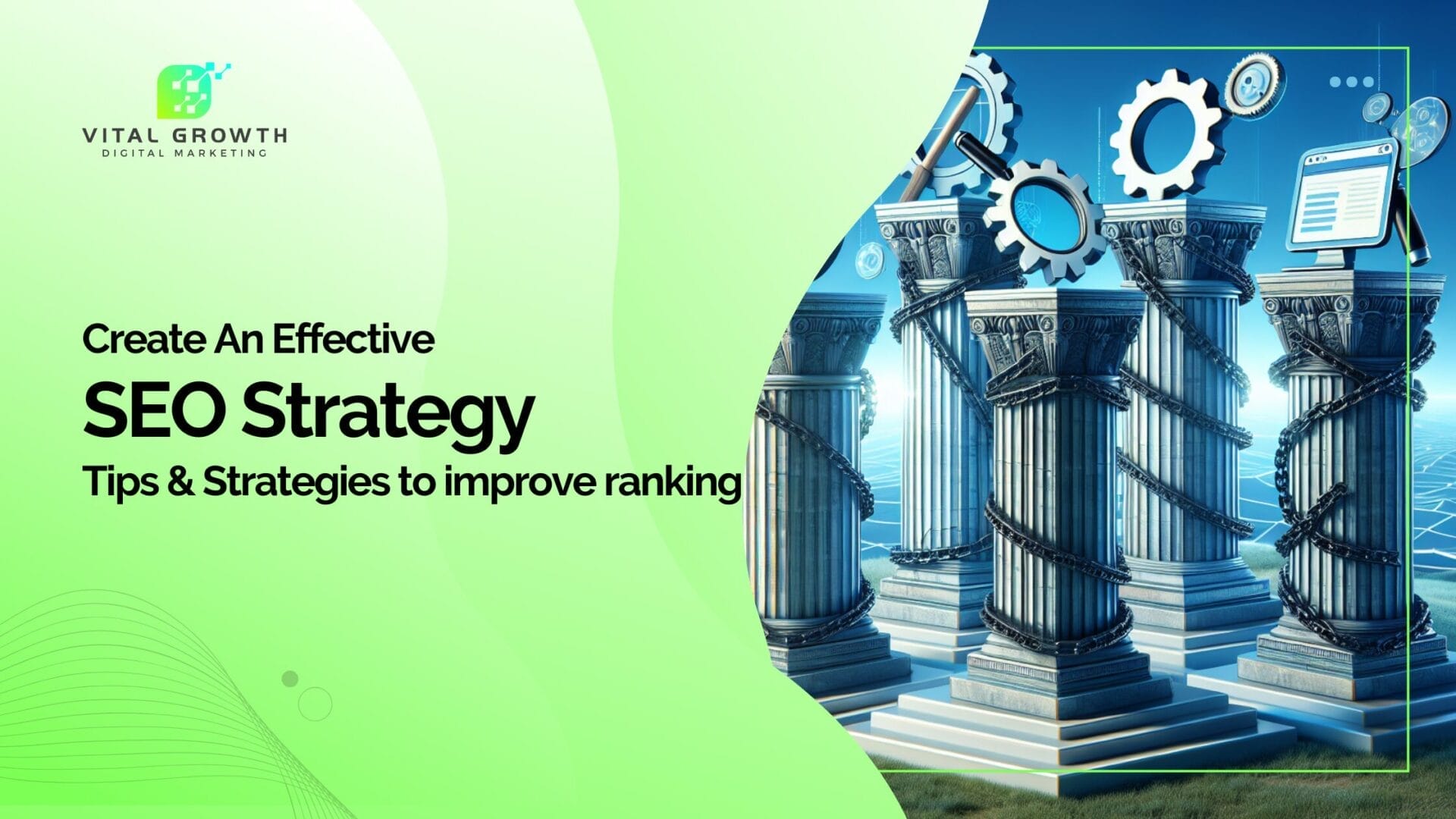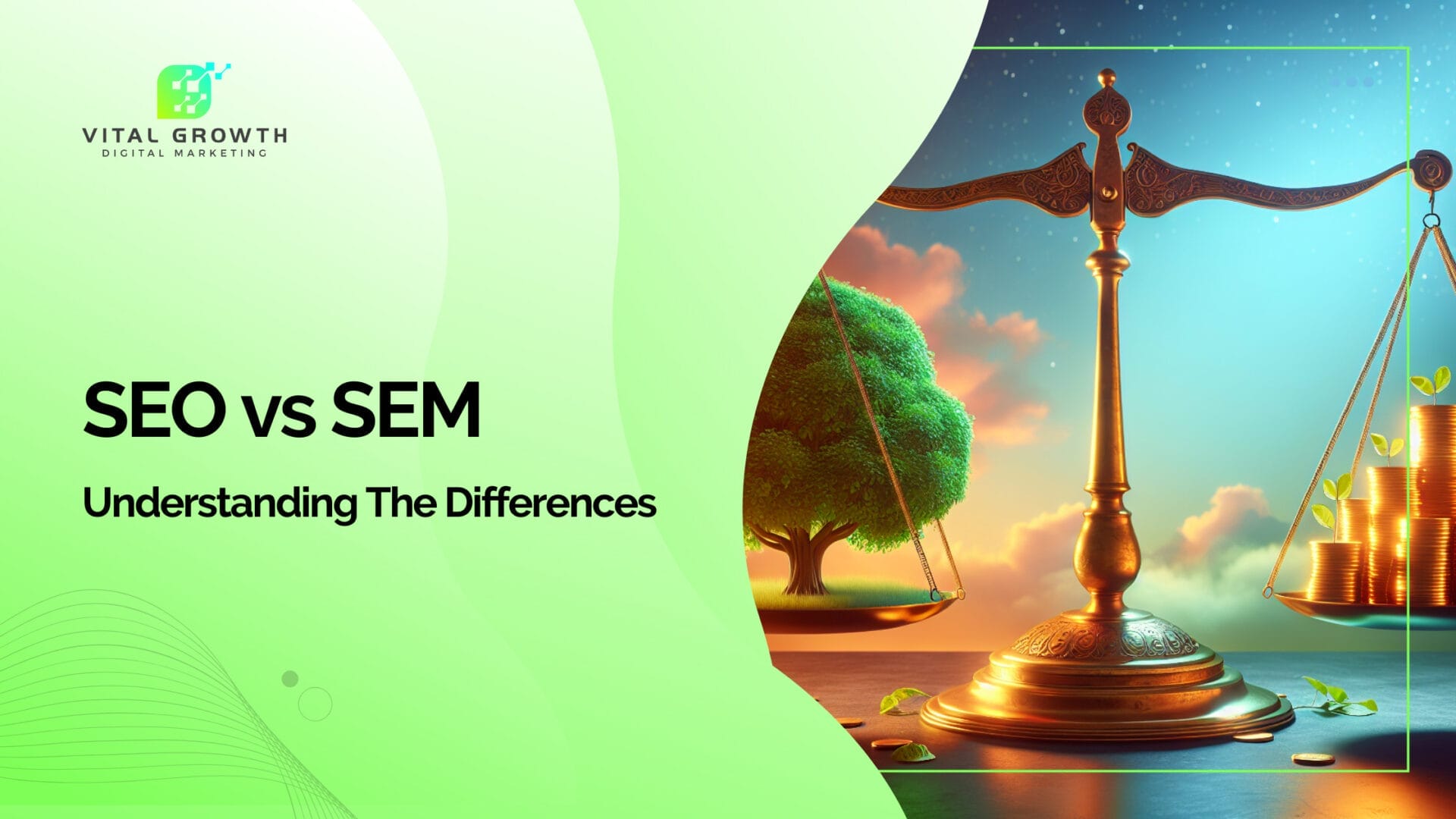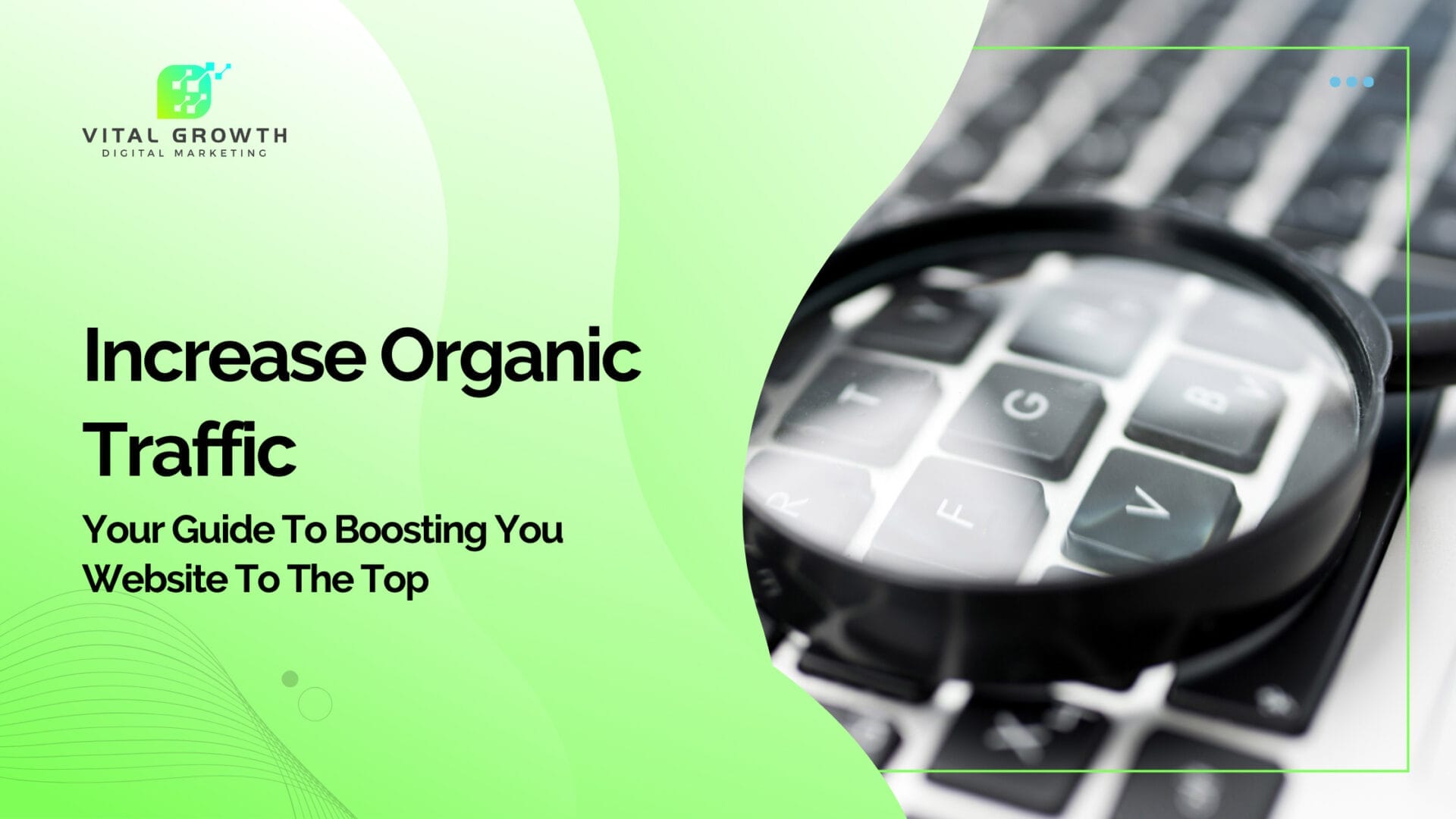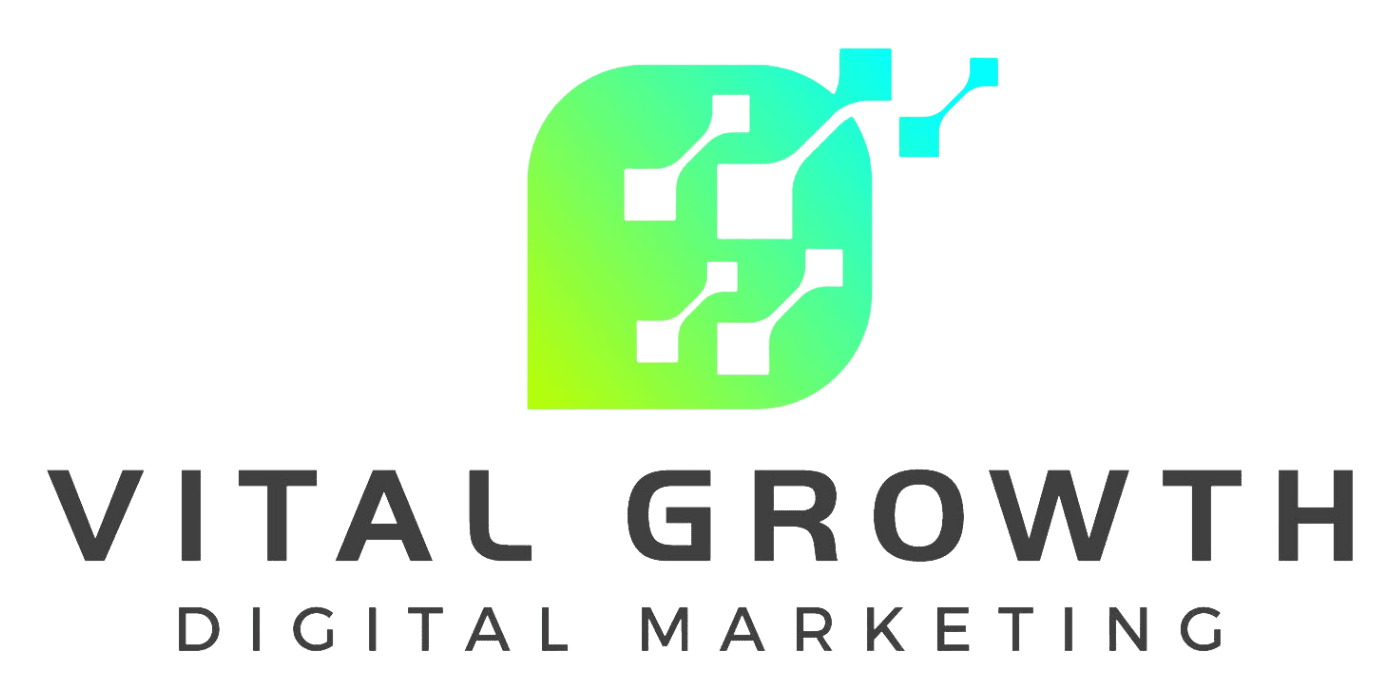Imagine a world where your website works like a magnet. It attracts a steady flow of engaged visitors. These visitors are eager to consume your content and become loyal customers. Sounds like a dream, right? Well, this dream can come true using search engine optimization (SEO) to increase organic traffic.
In this guide, we’ll reveal how to boost your website’s organic traffic. We aim to turn your online presence into a powerful force. You’ll learn about understanding your target audience and mastering keyword research. We’ll also guide you through creating high-quality content and optimizing on-page SEO elements.
From there, we’ll show you how to create a web of internal links and build a strong network of high-quality backlinks. You’ll learn how to use social media promotion to your advantage. Plus, we’ll talk about improving user experience and monitoring and analyzing performance.
Key Takeaways
- Understand your target audience, analyze their behavior, preferences, and demographics, and create user personas to attract and retain more organic traffic.
- Master keyword research by identifying high-traffic, low-competition keywords. Use analytics tools like Google Analytics, Google Search Console, and Semrush’s Organic Research to optimize your website for higher search rankings.
- Craft high-quality, evergreen content in various formats to cater to different audience preferences. This will engage your audience, offer more value to visitors, and increase organic traffic.
- Optimize on-page SEO elements such as title tags, meta descriptions, header tags, and image alt tags to increase your search engine rankings and boost organic traffic to your website.
- Enhance user experience by adopting a responsive design and optimizing your website’s load speed. This will improve your search engine rankings, user satisfaction, and organic traffic.
- Leverage internal linking by adding at least two or three relevant internal links for every new piece of content. This will improve site structure, boost the visibility of essential pages, and increase organic traffic.
- Build high-quality backlinks from reputable websites with high domain authority through guest posting and the skyscraper technique. This will boost your site’s credibility, search engine rankings, and organic traffic.
- Use social media to share your content with more people, get them engaged, and drive organic traffic to your website.
- Monitor and analyze your website’s performance using analytics tools to pinpoint areas for enhancement, follow the success of your SEO efforts, and modify your strategy as needed.
Understand Your Target Audience
Did you know that only half the battle in the quest for organic traffic lies in optimizing your site for search engines? The remaining half involves understanding your target audience and customizing your content to meet their needs and preferences. This way, you create web pages that don’t just rank well on search engine results but also appeal to potential customers.
To gain a deep understanding of your target audience, you’ll need to analyze their behavior, preferences, and demographics. Two critical components in this process are utilizing analytics tools and creating user personas.
We’ll examine these methods more closely to understand how they aid in creating content that pulls in more organic traffic to your website.
Use analytics tools
Google Analytics provides a wealth of useful information about your website’s performance, including insights related to your Google Business Profile. By tracking metrics such as popular pages, visitor demographics, and traffic sources, you’ll uncover opportunities to optimize your site and drive more website traffic.
For instance, Google Analytics can help you identify broken links on your site that could be affecting your SEO rankings and hindering relevant traffic.
Another powerful tool at your disposal is Semrush’s Organic Research tool, which allows you to:
- Gain valuable insights into the organic traffic of any website, including those you don’t own
- Discover new strategies to drive organic search traffic to your site
- Analyze the competition
Using these tools can help you to make evidence-based decisions about your SEO strategy and increase your website’s organic search traffic.
Create user personas
User personas are effective instruments that aid in gaining a profound understanding of your target audience. By conducting customer research and analyzing audience insights, you can create detailed representations of your target audience, including:
- Defining traits
- Preferences
- Habits
- Demographics
Creating user personas allows you to:
- Craft content and campaigns tailored to your audience’s needs and preferences
- Address customer priorities and pain points to create more pertinent and valuable content
- Drive more qualified traffic to your website by aligning content with the interests and characteristics of the target personas
Leverage the potential of user personas to see your organic traffic skyrocket.
Master Keyword Research with Search Engine Optimization
The foundation of any successful SEO strategy lies in keyword research.
Here are some key steps to follow:
- Identify high-traffic, low-competition keywords.
- Understand search intent to create content that matches user queries.
- Create well researched, informative, and relevant content
- Ensure your content meets the expectations of your audience.
By following these steps you can achieve search engine optimization for your website, making it more visible to search engines and driving more traffic to your site.
But how do you find these high-traffic, low-competition keywords, and how do you analyze search intent? The answer lies in utilizing keyword research tools and understanding the user’s search query.
Utilize keyword research tools
Keyword research tools such as Semrush, Ahrefs, and Google Keyword Planner can help you discover relevant keywords for your content. These tools allow you to check the traffic and competition for each keyword, making sure you target those with high search volume and low to medium competition.
Utilizing these keyword research tools allows you to uncover ‘sweet spot’ keywords with high volume and low competition, providing you the best opportunity to rank highly in search engine results, including local search results.
In turn, this will drive more organic traffic to your website and help you achieve your SEO goals.
Analyze search intent in search engines
Understanding search intent, or user intent, is important to create content that resonates with your audience and caters to their needs. By analyzing search intent, you can ensure your content is relevant to user queries and provides value to your audience.
To analyze user intent, look at the keywords and phrases users are searching for and consider the type of content they’re likely seeking.
Are they looking for information, making a purchase, or trying to navigate to a specific website?
Is the content a list, or a comprehensive guide? Perhaps it’s a step-by-step tutorial or a deep-dive into a complex topic?
Is the content a video, a blog post, an infographic, or a podcast?
Whatever the format, it’s important to understand that the nature of your content can significantly impact its appeal to your audience and its performance in search engine rankings.
Different content formats cater to various user preferences and search intents, making it important to diversify your content strategy to attract a wider audience and drive more organic traffic to your site.
By matching keywords to search intent, you can create content that meets user expectations and ultimately drives more organic traffic to your site.
Craft High-Quality Content
Having gained a profound understanding of your target audience and excelled in keyword research, it’s time to utilize that knowledge by creating high-quality content.
High-quality content not only improves your search rankings but also keeps your audience engaged and coming back for more. To achieve this, focus on evergreen topics that remain relevant over time and experiment with various content formats to cater to different audience preferences.
Creating content that is both evergreen and accessible in multiple formats will engage your audience and offer more value to visitors. In return, this will drive more organic traffic to your website and boost your search rankings.
Focus on evergreen topics
Evergreen topics are those that provide long-term value to your audience and maintain their relevance over time. Examples of evergreen topics include how-to guides, industry tips and tricks, and comprehensive tutorials. By focusing on these topics, you can ensure your content remains relevant and valuable to readers for an extended period.
Creating evergreen content has several benefits:
- Keeps your audience engaged
- Increases organic traffic
- Boosts your site’s visibility in search engines
- Positions you as a trusted authority in your niche
- Draws more organic traffic to your website
Use various content formats
Different types of content formats in digital marketing include:
- Blog posts
- Infographics
- Videos
- Podcasts
- Social media posts
- Ebooks
- Case studies
By experimenting with various content formats, you can cater to diverse audience preferences, enhance user engagement, and ensure your content remains fresh and exciting.
For example, you could create an infographic to visually represent complex data or embed videos in your blog posts to provide a more interactive and engaging experience.
Utilizing various content formats will engage your audience and attract more traffic to your website.
Optimize On-Page SEO Elements
On-page SEO is the practice of optimizing individual web pages to rank higher in search engine results and drive more organic traffic.
Important on-page SEO elements encompass:
- Title tags
- Meta descriptions
- Header tags
- Image alt tags
- Interlinking
Optimizing these elements will enhance your search engine rankings and boost organic traffic to your website.
Making sure your title tags are concise and descriptive, featuring your target keyword near the beginning. Optimizing your meta description with a clear value proposition and action-inspiring words can motivate users to click on your page.
By fine-tuning these on-page SEO elements, you’ll boost your website’s performance and drive more organic traffic.
Enhance User Experience (UX)
User experience (UX) is a important aspect of a successful website. Making sure your site is easy to navigate, mobile-friendly, and fast-loading can improve your search engine rankings and user satisfaction. A positive user experience retains visitors on your site for longer and raises the probability that they’ll revisit and endorse your website to others.
To enhance user experience, consider adopting a responsive design that adapts to different screen sizes and devices.
Optimize your website’s load speed to reduce bounce rates and improve user satisfaction.
Make sure that your website is error-free. This includes checking for broken links, missing images, and any technical issues that might deter visitors. A smooth, trouble-free user experience can significantly enhance your website’s credibility, increase user satisfaction, and ultimately boost your organic traffic.
By focusing on UX, you’ll create a website that both users and search engines love, ultimately driving more organic traffic.
Leverage Internal Linking
Internal linking is the process of linking one page on your website to another page on the same site.
This practice not only helps guide users through your site but also improves site structure and boosts the visibility of important pages.
Leveraging internal linking will boost organic traffic to your website and improve user engagement.
To optimize your internal linking strategy, follow these best practices:
- Add at least two or three internal links for every new piece of content.
- Use descriptive anchor text that includes relevant keywords.
- Avoid overusing exact match keywords.
- Make sure all internal linking is relevant
By implementing these internal linking best practices, you’ll create a seamless user experience and drive more traffic to your site.
Build High-Quality Backlinks
High-quality backlinks form a important part of any successful SEO strategy. Building backlinks from reputable websites with high domain authority can significantly boost your site’s credibility and search engine rankings.
Two effective methods for building high-quality backlinks are guest posting and the skyscraper technique.
Guest posting entails contributing articles to other websites in your niche, whereas the skyscraper technique involves crafting extraordinary content that lures backlinks from authoritative websites.
Guest posting
Guest posting is an excellent way to gain exposure, build relationships, and earn valuable backlinks from reputable websites in your niche. By contributing high-quality content to other websites, you’ll not only showcase your expertise but also increase your website’s domain authority and trust, and improve its search engine rankings.
To maximize your success with guest posting, focus on the following:
- Writing great content
- Perfecting your bio
- Being responsive and prompt
- Promoting your content
Target sites with high domain authority and a similar audience, and create content that adds value to their platform. Consistently contributing valuable content through guest posting will help you construct a solid link profile and attract more organic traffic to your website.
Skyscraper technique
The skyscraper technique is a highly effective link-building strategy that involves finding high-ranking content with many backlinks, improving it, and creating even better content that attracts more backlinks.
Popularized by Brian Dean from Backlinko, this technique can help you reach new heights with your SEO efforts.
Enhancing existing popular content and duplicating the backlinks allows you to pinpoint the weaknesses and craft superior content that lures more backlinks. Not only will this strategy help you build high-quality backlinks, but it will also improve your website’s authority and search engine rankings, driving more organic traffic to your site.
Utilize Social Media Promotion
Promoting on social media is a great method to distribute your content to a broader audience, heighten engagement, and steer organic traffic to your website. By using social media platforms like Facebook, Twitter, now X, and LinkedIn, you can expand your reach, boost engagement, and bring more organic traffic to your site.
To extend the reach of your social media posts, incorporate useful hashtags and enhance your content presentation.
You can also use paid promotion to reach a larger audience if you have a limited organic reach. By utilizing social media promotion, you’ll increase your website’s visibility and drive more traffic to your site.
Monitor and Analyze Performance
Keeping track of and analyzing your website’s performance is important to pinpoint areas for enhancement, follow the success of your SEO efforts, and modify your strategy as needed.
By using analytics tools like Google Analytics, Google Search Console, and Semrush’s Organic Research Tool, you can gain valuable insights into your website’s performance and make data-driven decisions to optimize your site.
Frequently reviewing and analyzing your website’s performance helps in identifying possible issues, enhancing your content, and improving your search engine rankings. By consistently monitoring and analyzing your site’s performance, you’ll ensure a steady flow of visitors and maintain the success and longevity of your online business.
Summary
Boosting organic traffic to your website involves a complete approach that begins with a deep understanding of your target audience, their behaviors, preferences, and demographics. This knowledge is highly important in crafting user personas and tailoring your content to meet their needs and preferences.
Mastering keyword research is another big step, where you identify high-traffic, low-competition keywords and understand search intent to create content that matches user queries. Tools like Google Analytics and Semrush’s Organic Research tool are useful in this process.
Creating high-quality, evergreen content in various formats is also a great strategy. This engages your audience, offers more value to visitors, and increases organic traffic. The content must be relevant, informative, and cater to the diverse preferences of your audience.
On-page SEO elements such as title tags, meta descriptions, header tags, and image alt tags also need to be optimized to increase your search engine rankings and boost organic traffic to your website.
Enhancing user experience by adopting a responsive design and optimizing your website’s load speed is another step towards increasing organic traffic. This improves search engine rankings, user satisfaction, and organic traffic.
Internal linking and building high-quality backlinks are also important for increasing organic traffic. They improve site structure, boost the visibility of essential pages, increase organic traffic, and boost your site’s credibility, search engine rankings, and organic traffic.
Utilizing social media for content promotion is another effective method to distribute your content to a broader audience, heighten engagement, and steer organic traffic to your website.
Lastly, monitoring and analyzing your website’s performance using analytics tools helps pinpoint areas for enhancement, track the success of your SEO efforts, and modify your strategy as needed.
The journey to increase organic traffic may seem challenging, but with the right strategies and a commitment to continuous improvement, you can achieve stellar search rankings and attract a steady stream of highly engaged visitors.
What does an increase in organic traffic mean?
An increase in organic traffic means more visitors are coming to your website from the unpaid search engine results, improving your website’s rank and gaining higher visibility in search engine results.
What is the best source of traffic for organic traffic?
To increase website organic traffic, SEO and content marketing are essential strategies to consider. You can achieve higher organic search rankings through effective search engine optimization (SEO) on sites such as Google, Bing, and Yahoo. Content marketing, link building, optimizing for local SEO, creating relevant and valuable content, and taking advantage of social media are all great ways to drive more organic traffic to your site.
How to increase organic traffic 2023?
Make sure to use the right keywords, find competitor keyword ideas, update your content strategically, include related keywords, write the right amount of words, promote your content, and use copywriting tips to increase engagement – these steps will help you increase organic traffic in 2023.
What is the importance of understanding my target audience for increasing organic traffic?
Understanding your target audience is essential for increasing organic traffic as it allows you to create content that resonates with potential customers and ranks well in search engine results.
How can I find high-traffic, low-competition keywords?
Utilize keyword research tools like Semrush, Ahrefs, and Google Keyword Planner to uncover keywords with both high search volume and low competition for your content. This is a surefire way to identify effective, high-traffic, low-competition keywords.
How can I use social media to increase organic traffic?
Utilizing social media platforms such as Facebook, Twitter, LinkedIn, and Instagram can significantly boost your organic traffic. By sharing your high-quality content on these platforms, you can reach a wider audience, engage with potential customers, and drive more traffic back to your website.
What are the benefits of optimizing on-page SEO elements?
Optimizing on-page SEO elements like title tags, meta descriptions, header tags, and image alt tags can significantly improve your website’s visibility on search engine results pages (SERPs). This leads to increased organic traffic, higher conversion rates, and improved user experience.
Why is it important to create high-quality, evergreen content?
Creating high-quality, evergreen content ensures that your content remains relevant and valuable to your audience over time. This not only helps to improve your search engine rankings but also keeps your audience engaged, leading to increased organic traffic and higher user retention.
How can I improve the user experience on my website?
Improving user experience can be achieved by ensuring your website is mobile-friendly, easy to navigate, and has a fast loading speed. Additionally, providing valuable and relevant content, using clear call-to-actions (CTAs), and ensuring your website is free from technical errors can significantly enhance user experience and boost organic traffic.
What is the role of internal linking in boosting organic traffic?
Internal linking helps guide users through your website, improving user experience and engagement. It also helps search engines understand the structure of your website, which can boost your visibility on search engine results pages (SERPs) and increase organic traffic.
